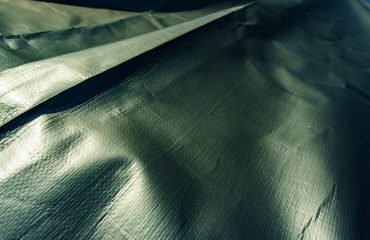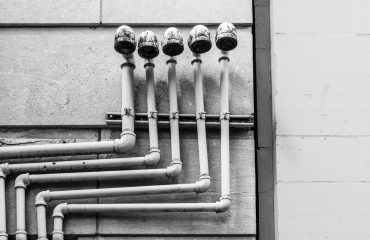The integrity of pipe systems is paramount across numerous industries, from oil and gas to water management and construction. A single point of failure can lead to catastrophic consequences, highlighting the critical need for robust quality control systems throughout the pipe production process. This comprehensive guide explores the key aspects of ensuring high-quality pipe products, from raw material selection to final inspection.
1. Raw Material Inspection: The Foundation of Quality
The journey to a high-quality pipe begins long before the manufacturing process. Rigorous inspection of raw materials is crucial. This involves testing for chemical composition, ensuring it meets the specified grade and standards (e.g., ASTM, ASME). For steel pipes, this might include analyzing carbon content, manganese, silicon, and other alloying elements. Non-destructive testing (NDT) methods like ultrasonic testing (UT) can detect internal flaws in the raw material before it even enters the manufacturing process. Detailed documentation of these tests and their results is essential for traceability and accountability.
Furthermore, the dimensions and surface quality of the raw material are also carefully checked. Variations in size or surface imperfections can significantly impact the final product’s quality and integrity. This stage often involves visual inspection, dimensional measurements using calibrated tools, and potentially surface roughness testing.
2. In-Process Quality Control: Monitoring Manufacturing
Maintaining quality isn’t just about the beginning; it’s a continuous process throughout manufacturing. In-process quality control involves regular monitoring and testing at various stages of pipe production. For example, during the forming process (whether seamless or welded), parameters like wall thickness, diameter, and ovality are continuously monitored. Automated systems with real-time feedback mechanisms are often employed to ensure consistency and identify deviations from specifications immediately. This allows for prompt corrective actions, minimizing waste and ensuring consistent product quality.
Welding processes, if applicable, require particularly stringent quality control. Procedures must adhere to strict codes and standards (e.g., AWS D1.1). Non-destructive testing methods like radiographic testing (RT), ultrasonic testing (UT), and magnetic particle inspection (MPI) are crucial for detecting welding defects like porosity, cracks, and incomplete penetration. Qualified welders and rigorous welding procedure specifications are essential for consistent, high-quality welds.
3. Dimensional and Physical Testing: Ensuring Conformity
Once the pipes are manufactured, rigorous dimensional and physical testing is carried out to verify conformity with the specified standards. This involves precise measurements of the pipe’s outer diameter, inner diameter, wall thickness, length, and straightness. Deviations from the specified tolerances are carefully documented and analyzed. Physical tests assess the pipe’s mechanical properties, including tensile strength, yield strength, elongation, and hardness. These tests determine the pipe’s ability to withstand pressure, stress, and other operating conditions.
Hydrostatic testing is a common method used to evaluate the pipe’s ability to withstand internal pressure. Pipes are filled with water and pressurized to a level exceeding the expected operating pressure. This test helps identify any weaknesses or leaks. Other tests, such as burst testing (to determine ultimate pressure capacity) and impact testing (to assess resistance to shock), may also be performed depending on the application and pipe material.
4. Non-Destructive Testing (NDT): Unveiling Hidden Flaws
NDT methods play a vital role in ensuring pipe quality without damaging the product. As mentioned earlier, these techniques are used throughout the manufacturing process, from raw material inspection to finished product verification. Different NDT methods are employed depending on the type of defect being sought and the pipe material. Ultrasonic testing (UT) uses high-frequency sound waves to detect internal flaws, while radiographic testing (RT) uses X-rays or gamma rays to create images revealing internal structures and defects.
Magnetic particle inspection (MPI) is used to detect surface and near-surface cracks in ferromagnetic materials. Dye penetrant testing (PT) is another surface inspection method used to detect cracks and other surface discontinuities. The selection of appropriate NDT methods is crucial for effective defect detection and ensures that the pipes meet the required quality standards.
5. Documentation and Traceability: Maintaining a Clear Record
Meticulous documentation and traceability are essential components of any effective quality control system. Every stage of the process, from raw material sourcing to final inspection, should be thoroughly documented. This includes test results, inspection reports, and any corrective actions taken. A robust traceability system allows for the identification of the origin of any defective pipe, facilitating prompt investigations and corrective actions. This is crucial for ensuring product liability and maintaining customer confidence.
Digitalization of quality control processes is becoming increasingly common. Software solutions can help manage test data, generate reports, and ensure traceability across the entire supply chain. These systems can improve efficiency, reduce errors, and enhance overall quality control effectiveness.
Implementing a comprehensive pipe product quality control system requires a commitment to excellence throughout the entire production process. By combining rigorous testing, advanced technologies, and meticulous documentation, manufacturers can ensure the delivery of high-quality pipes that meet the stringent demands of various industries and contribute to the safety and reliability of critical infrastructure.
SEO Tags:
Pipe Quality Control, Pipe Manufacturing, Non-Destructive Testing, Pipe Inspection, Quality Assurance Pipes




